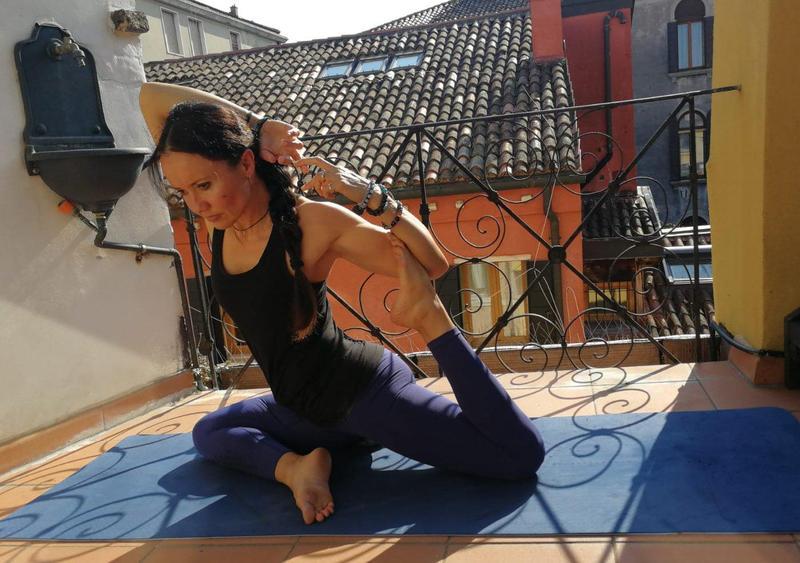Vinyasa Yoga Flow
Vinyasa Class
Vinyasa Yoga Flow doesn’t have reviews yet.
Click the button below to leave the first one!
About Bea Santoro My name is Bea and my studio's name is Moka Yoga Venice. I'm a Registered Yoga Teacher (RYT). I have Continuing Education Certificates of: I live in Venice even if I was born in Rome. I have many passions beyond yoga: \* Rowing in our fantastic Lagoon in Voga Veneta style (like a Gondolier to be clear) \* Travels \* Photography |
Bea Santoro doesn’t have reviews yet.
Click the button below to leave the first one!
Dear Irina, thanks for your question. It depends on many factors: on the type and level of hyperlordosis, on the type of Asana and on the way you practice the pose. Awareness in Yoga is one of its fundament !
Yoga in any case can help correct muscular issues and relieve pain. But not every asana is right for someone having hyperlordosis issues…Each pose has many way on which it can be modified. Stretching and breathing exercises, in particular, can reduce pain while also strengthening your muscles to help your posture (I'm thinking about the core, which help us to improve our posture).
I would avoid strong backbends done without control, preferring asanas like Uttanasana and Ardha Uttanasana, paschimottanasana..but also gentle twists like Matsyendrasana.
Be gentle with your bodying always aware of what is your body feeling.
Please ask me if you have further questions, Bea
Hello! Can this online therapy help with hyperlordosis?
Dear Sherry, Yoga practice is thousands of years old. In Western world came in the late 1800s and meantime different styles had developed . Vinyasa is a dynamic style, is a flow of a series of poses, joining breath and movement. It increase flexibility and balance, strenght and stamina. It is a branch of Ashtanga Yoga, but Vinyasa is more explorative and creative while Ashtanga is more methodological. In any case it depends from the teacher, as I saw many Vinyasa Classes very methodological!
Each pose has benefits and contraindications for people with some conditions, like any other style in Yoga (non specifically related to Vinyasa), but telling your teacher if you have some injury, he/she can help you to understand which is the correct way or modification to afford a specific pose. Please ask me if you have further questions, Bea
Hello. Please tell me how Vinyasa Yoga differs from other types of yoga? If there are any limitations? Thank you.
Dear Stormi, thanks for your question. It depends on many factors: on the type and level of scoliosis, on the type of Asana and on the way you practice the pose. Each pose has many way on which can be modified to fit the needs of the practitioner, to be practiced in the safest way. Not all the poses are right for every person in every period of their life, specially for people with some physical issue. Yoga could also help people with scoliosis, but the best thing you can do is asking your medical professional BEFORE starting on a yoga practice. I suggest you this article that treat in depth the topic . I hope I helped you, all the best, Bea
Hi! Is yoga safe for people with scoliosis?
